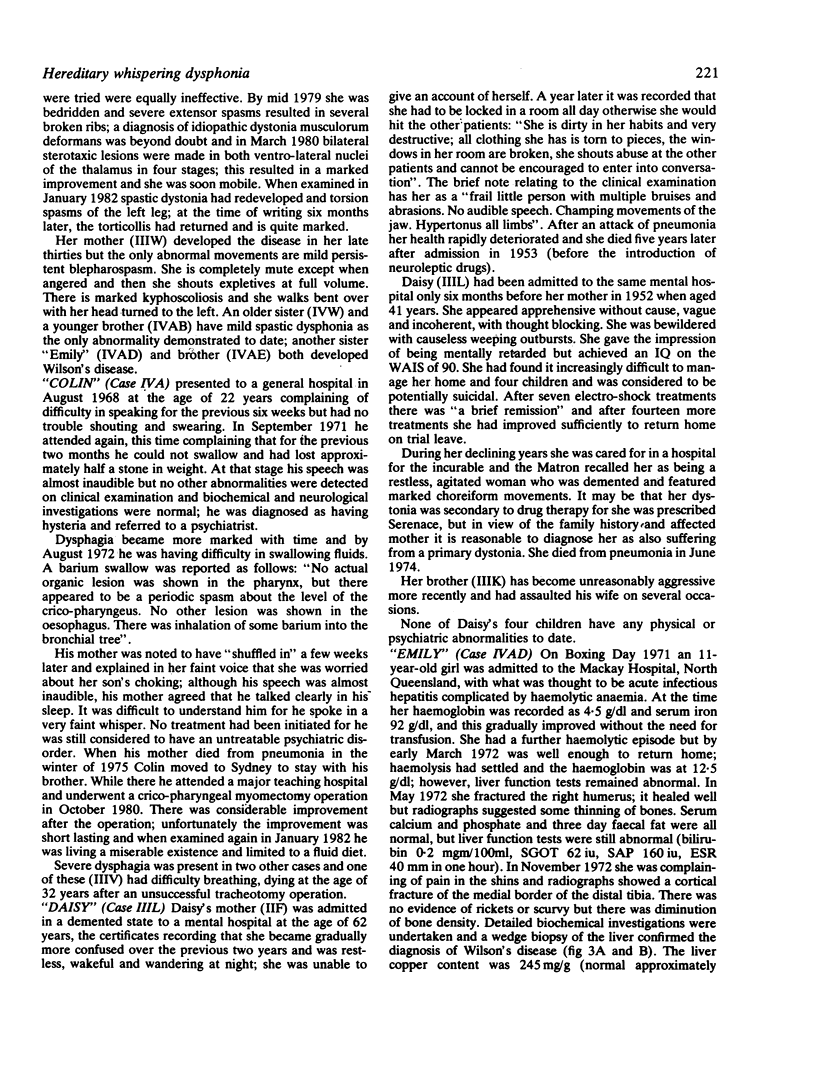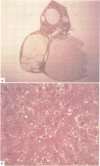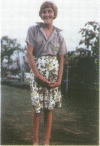Abstract
An Australian family group is described where at least twenty members have inherited torsion dystonia and two siblings with an affected mother have similar clinical manifestations, but have also the biochemical and pathological changes found in Wilson's disease. Whispering dysphonia was the commonest presenting symptom, and a diagnosis of hysteria was invariably made if the family history was not known. This group emphasises the enormously varied ways in which torsion dystonia may be manifested in one family, and raises the possibility of a disturbance in copper transport in diseases of the basal ganglia other than Wilson's disease.
Full text
PDF






Images in this article
Selected References
These references are in PubMed. This may not be the complete list of references from this article.
- BITTENBENDER J. B., QUADFASEL F. A. Rigid and akinetic forms of Huntington's chorea. Arch Neurol. 1962 Oct;7:275–288. doi: 10.1001/archneur.1962.04210040027003. [DOI] [PubMed] [Google Scholar]
- VON KEYSERLINGK H. Zum familiären Vorkommen der idiopathischen Torsionsdystonie. Nervenarzt. 1956 Jan 20;27(1):34–35. [PubMed] [Google Scholar]
- ZEMAN W., KAELBLING R., PASAMANICK B. Idiopathic dystonia musculorum deformans. II. The formes frustes. Neurology. 1960 Dec;10:1068–1075. doi: 10.1212/wnl.10.12.1068. [DOI] [PubMed] [Google Scholar]





